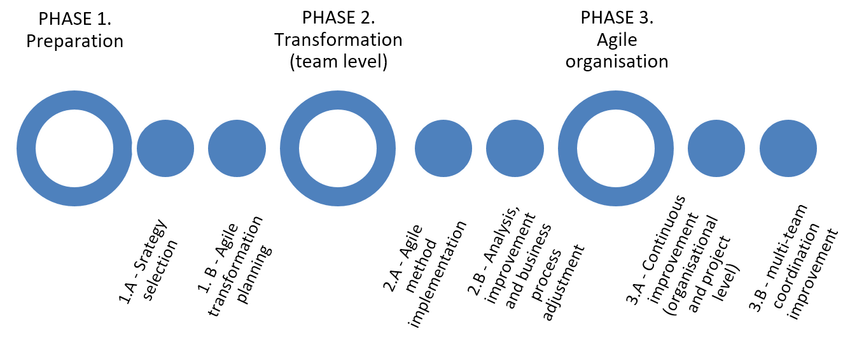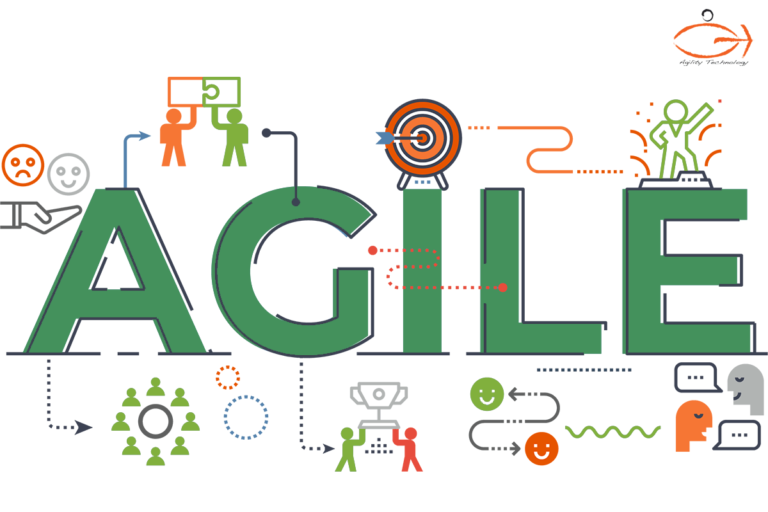Introduction
In the rapidly evolving world of project management, Agile methodologies have emerged as a transformative force, revolutionizing the way teams collaborate, innovate, and deliver results. Navigating the terrain of modern Agile adoption is a crucial endeavor for organizations aiming to stay competitive, adaptive, and customer-centric. In this blog post, we will embark on a journey to explore the intricacies of Agile adoption in today’s dynamic business environment.
Agile Essentials: A Brief Overview
Before we dive deeper, let’s briefly outline the fundamental tenets of Agile methodologies. At its core, Agile emphasizes iterative development, frequent feedback, and close collaboration among cross-functional teams. This approach allows teams to respond swiftly to changing requirements, ensuring the delivery of high-quality products or services that align with customer needs.

The Changing Landscape: Why Agile Matters Today
In an era characterized by rapid technological advancements, shorter product life cycles, and an ever-increasing demand for innovation, Agile methodologies offer a beacon of adaptability. We’ll discuss how Agile’s flexibility addresses the challenges posed by uncertainty and market fluctuations, allowing organizations to pivot, refine, and optimize their projects in real-time.
Key Benefits of Agile Adoption:
Enhanced Customer Satisfaction: Agile’s customer-centric approach ensures that project outcomes closely align with end-user expectations, resulting in higher satisfaction rates.
Continuous Improvement: Through regular iterations and retrospectives, Agile teams foster a culture of continuous learning and enhancement, driving improved processes and outcomes.
Accelerated Time-to-Market: Agile practices enable quicker product releases, giving organizations a competitive edge in getting their offerings to market ahead of competitors.
Efficient Resource Allocation: Agile’s iterative planning and adaptive scope management help optimize resource utilization and minimize waste.
Navigating Challenges: Roadblocks on the Agile Journey
While Agile offers numerous advantages, it’s important to acknowledge and address potential challenges. We’ll explore common obstacles such as resistance to change, inadequate team alignment, and the need for robust communication.
Strategies for Successful Agile Adoption:
Leadership Commitment: Buy-in from leadership is crucial to foster a culture of Agile adoption throughout the organization.
Comprehensive Training: Equipping teams with the necessary skills and knowledge ensures a smoother transition to Agile practices.
Clear Communication: Open and transparent communication channels enhance collaboration and help overcome resistance.
Agile Tools and Frameworks: Leveraging tools and frameworks tailored to Agile methodologies streamlines project management processes.
Case Study: A Glimpse into Agile Success
We’ll showcase a real-world case study highlighting a company’s successful transition to Agile methodologies. By examining their journey, we can glean insights into the practical implementation of Agile principles and the resulting positive impact on project outcomes.
Conclusion
In today’s fast-paced business landscape, embracing Agile methodologies is no longer a choice—it’s a necessity. Navigating the nuances of Agile adoption empowers organizations to thrive amidst change, seize opportunities, and achieve sustainable growth. By embracing the principles, benefits, and strategies outlined in this blog post, you’re well on your way to charting a successful course through the dynamic world of modern project management.
Stay tuned for more insightful content on Agile practices and other pertinent topics as we continue to explore the ever-evolving realm of project management.










